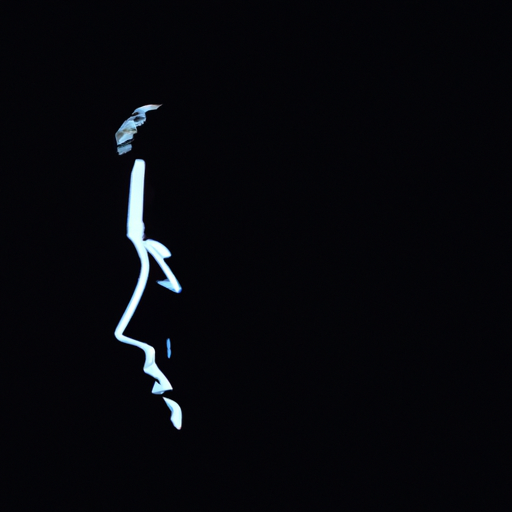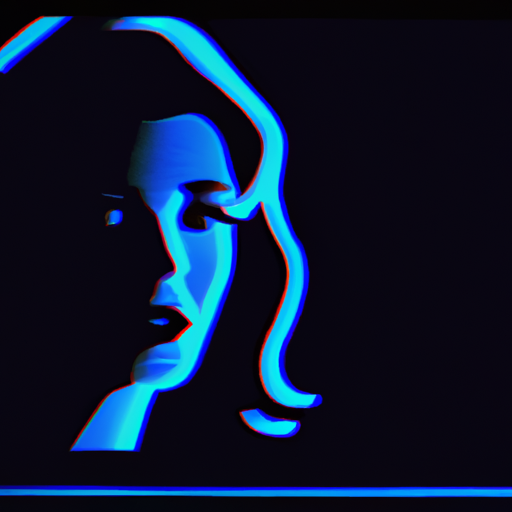
-
Table of Contents
- Film Noir Aesthetics: Influence on Graphic Design
- 1. The Origins of Film Noir
- 2. Film Noir Aesthetics in Graphic Design
- 2.1 Typography
- 2.2 Color Palettes
- 2.3 Composition and Layout
- 3. Case Studies: Film Noir-inspired Graphic Design
- 3.1 “Sin City” Graphic Novels
- 3.2 “Blade Runner” Movie Poster
- 3.3 “L.A. Noire” Video Game
- 4. The Enduring Appeal of Film Noir Aesthetics
- 5. Conclusion
Film Noir Aesthetics: Influence on Graphic Design

Film noir, a genre of dark and atmospheric crime films that emerged in the 1940s and 1950s, has had a profound influence on various art forms, including graphic design. The distinct visual style and narrative elements of film noir have inspired designers to incorporate its aesthetics into their work, creating a unique blend of nostalgia, mystery, and sophistication. In this article, we will explore the key characteristics of film noir aesthetics and examine how they have influenced graphic design.
1. The Origins of Film Noir
Before delving into the influence of film noir on graphic design, it is essential to understand the origins and defining features of this genre. Film noir emerged in Hollywood during the post-World War II era, reflecting the anxieties and uncertainties of the time. The term “film noir” was coined by French critics who noticed a trend of dark and pessimistic American crime films.
Film noir is characterized by its visual style, narrative structure, and thematic elements. Visually, film noir is known for its high contrast lighting, deep shadows, and skewed camera angles. These techniques create a sense of mystery, tension, and unease. The narrative structure often revolves around a morally ambiguous protagonist, a femme fatale, and a convoluted plot filled with crime, deception, and betrayal. Themes of alienation, existentialism, and the dark side of human nature are prevalent in film noir.
2. Film Noir Aesthetics in Graphic Design
The visual style and thematic elements of film noir have found their way into graphic design, influencing various aspects of the discipline. From typography to color palettes, designers have embraced film noir aesthetics to evoke a sense of nostalgia, intrigue, and sophistication in their work.
2.1 Typography
One of the most noticeable influences of film noir on graphic design is in typography. Film noir movie posters and title sequences often feature bold, dramatic lettering with sharp angles and exaggerated serifs. This style of typography captures the essence of film noir by conveying a sense of danger, mystery, and elegance. Designers have adopted this typographic style in various projects, such as book covers, album artwork, and branding materials, to create a visually striking and evocative aesthetic.
2.2 Color Palettes
The use of color in film noir is crucial in setting the mood and atmosphere. Film noir typically employs a limited color palette, with a heavy emphasis on black, white, and shades of gray. This monochromatic scheme enhances the contrast between light and shadow, creating a visually striking and dramatic effect. Graphic designers have incorporated this color palette into their work, using black and white imagery or desaturated colors to evoke a sense of nostalgia and mystery. The use of high contrast and deep shadows in film noir has also influenced the use of chiaroscuro in graphic design, adding depth and dimension to compositions.
2.3 Composition and Layout
The composition and layout of film noir cinematography have had a significant impact on graphic design. Film noir often features low-angle shots, skewed perspectives, and asymmetrical compositions, which create a sense of unease and tension. Graphic designers have adopted these techniques, using unconventional angles, diagonal lines, and off-center compositions to add visual interest and dynamism to their designs. This approach breaks away from traditional symmetrical layouts, creating a sense of movement and energy.
3. Case Studies: Film Noir-inspired Graphic Design
To further illustrate the influence of film noir on graphic design, let’s examine a few case studies of notable projects that have embraced this aesthetic:
3.1 “Sin City” Graphic Novels
Frank Miller’s “Sin City” graphic novels are a prime example of how film noir aesthetics can be translated into the world of graphic design. The series features high contrast black and white artwork, with minimal splashes of color to highlight specific elements. The use of dramatic lighting, deep shadows, and gritty urban settings creates a visually immersive experience reminiscent of classic film noir.
3.2 “Blade Runner” Movie Poster
The iconic movie poster for Ridley Scott’s “Blade Runner” is another example of film noir aesthetics in graphic design. The poster features a monochromatic color scheme with a neon glow, capturing the futuristic yet gritty atmosphere of the film. The typography, with its sharp angles and dramatic letterforms, adds to the overall noir-inspired aesthetic.
3.3 “L.A. Noire” Video Game
The video game “L.A. Noire” takes direct inspiration from film noir, both in its narrative and visual style. The game’s graphics feature a muted color palette, high contrast lighting, and cinematic camera angles, creating an immersive experience that transports players into a noir-inspired detective story.
4. The Enduring Appeal of Film Noir Aesthetics
The enduring appeal of film noir aesthetics in graphic design can be attributed to several factors:
- Nostalgia: Film noir aesthetics evoke a sense of nostalgia for a bygone era, capturing the allure and mystique of classic Hollywood.
- Mystery and Intrigue: The dark and atmospheric nature of film noir aesthetics adds an element of mystery and intrigue to graphic design, captivating viewers and sparking their curiosity.
- Sophistication: Film noir aesthetics exude a sense of sophistication and elegance, elevating the visual impact of graphic design projects.
- Timelessness: Despite originating in the mid-20th century, film noir aesthetics have stood the test of time, remaining relevant and influential in contemporary graphic design.
5. Conclusion
Film noir aesthetics have left an indelible mark on graphic design, influencing typography, color palettes, composition, and layout. The distinct visual style and thematic elements of film noir continue to captivate designers and viewers alike, evoking a sense of nostalgia, mystery, and sophistication. By incorporating film noir aesthetics into their work, designers can create visually striking and evocative designs that stand the test of time.
